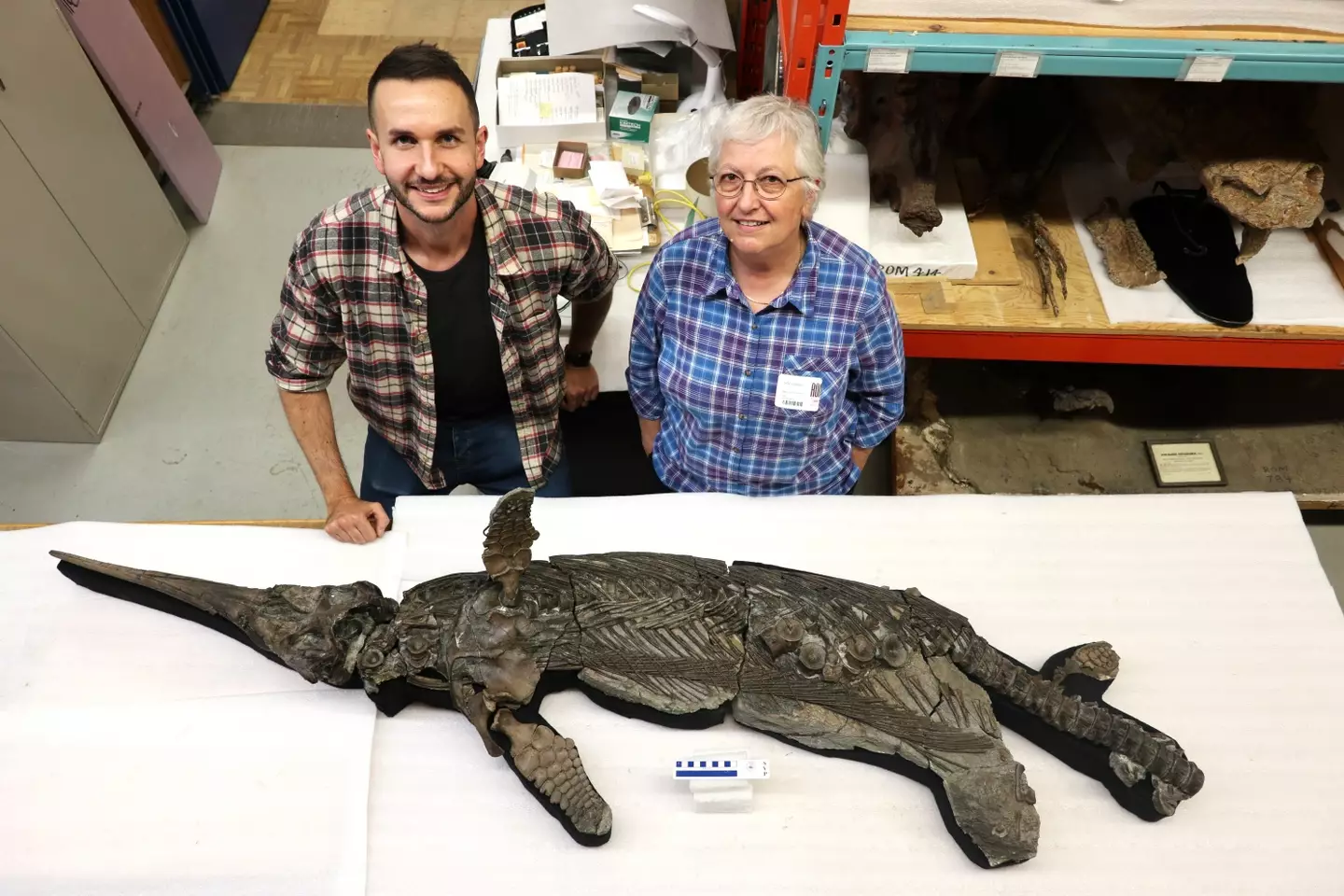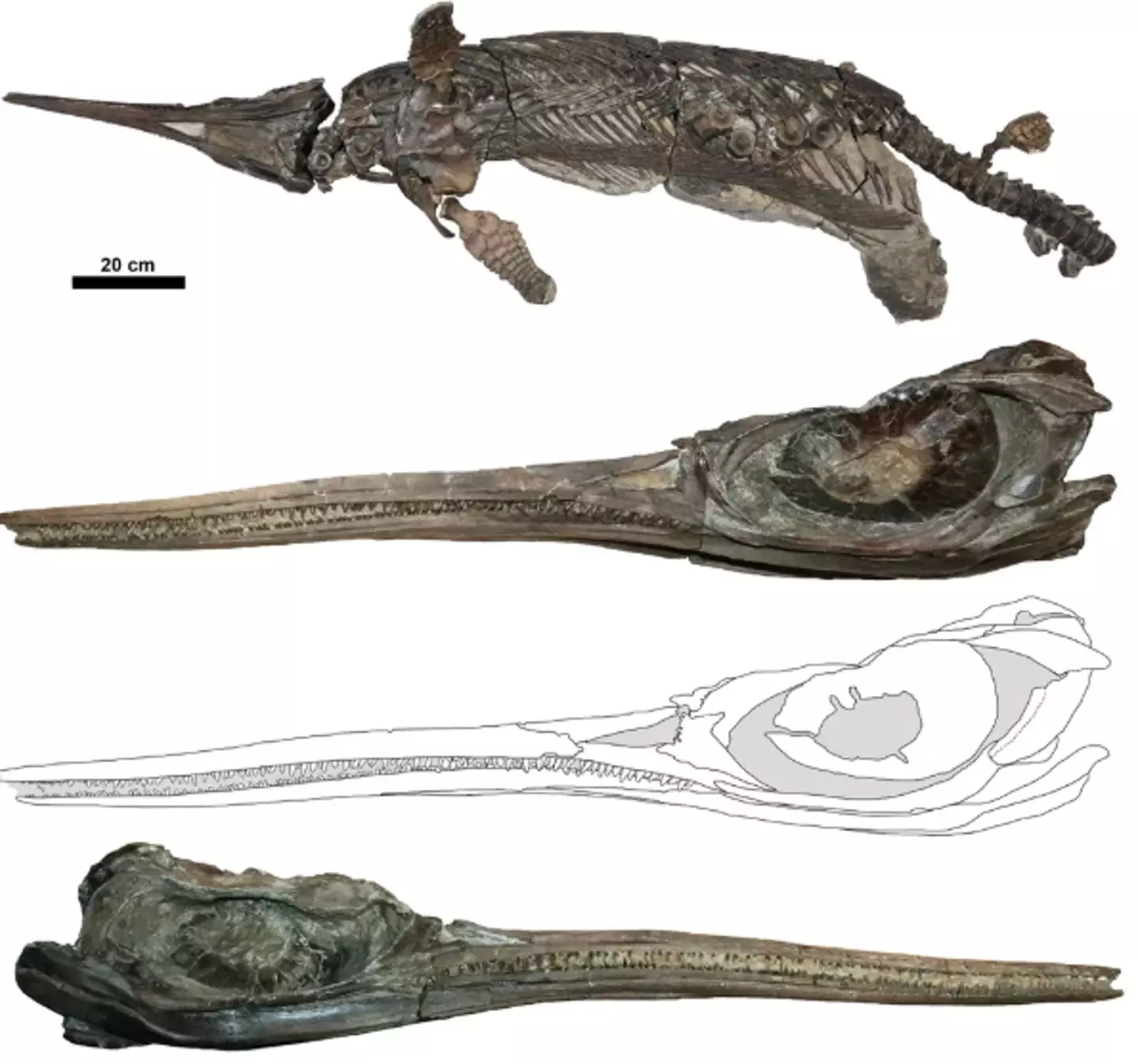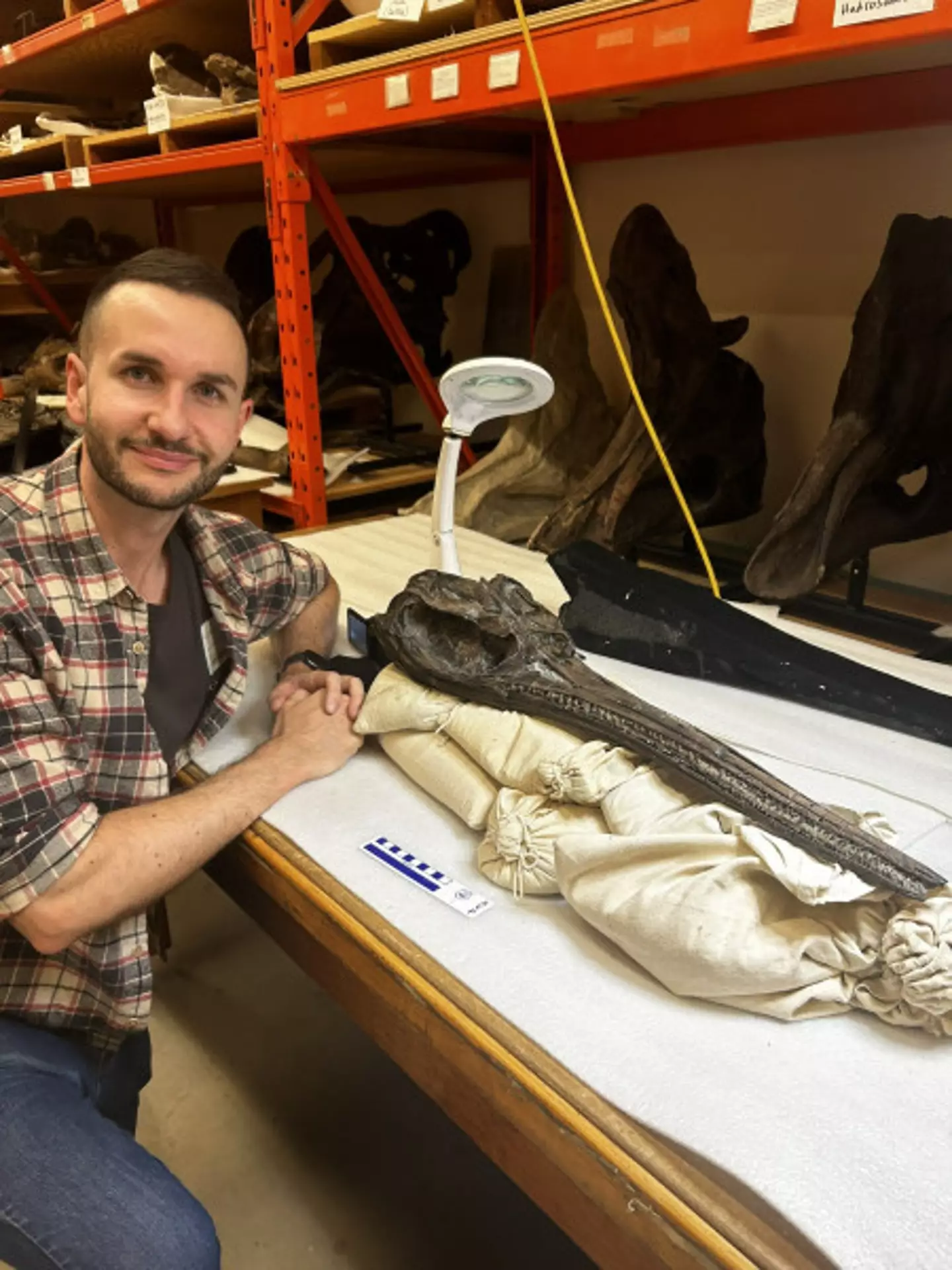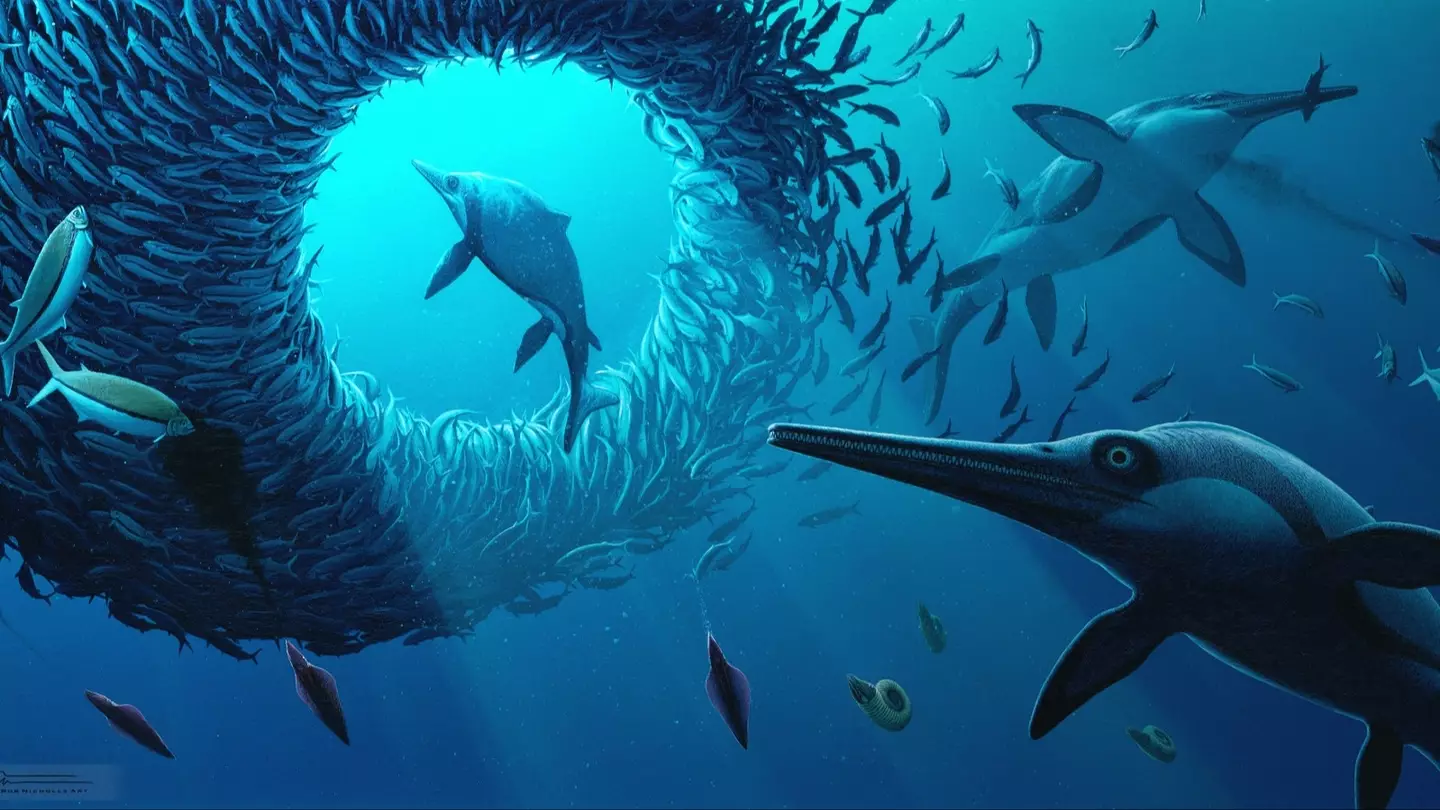A rare marine creature has been discovered, shedding light on a fascinating period of the Jurassic era.
Unearthed on the UK’s Jurassic Coast, this unique species of ichthyosaur was introduced in a study released on October 10, offering new insights into the ancient species.
Ichthyosaurs, known as apex marine predators of their time, resemble modern-day dolphins. This newly identified ichthyosaur, named Xiphodracon goldencapsis or the ‘Sword Dragon of Dorset,’ represents the sole known fossil of its type, which could provide crucial information for understanding ichthyosaur evolutionary history.
According to research published in the journal Papers in Palaeontology, the fossil dates back to the Early Jurassic period, approximately 190 million years ago.

While numerous ichthyosaur fossils have been discovered along the UK’s coastline, this particular specimen displays distinct differences from others of its kind.
Xiphodracon goldencapsis is believed to have existed during the Pliensbachian age, which spanned from around 193 million to 184 million years ago, marking the later years of the Early Jurassic period.
The fossil was first discovered at the Golden Cap in 2001 by Dorset fossil collector Chris Moore, who found it remarkably well-preserved in three dimensions.
Moore unearthed a skeleton featuring a skull with a notably large eye socket and a long, sword-like snout, with evidence of its last meal still visible.
The researchers suggest that the creature was approximately 10 feet in length and primarily consumed fish and squid.
After the discovery, Moore sold the specimen to the Royal Ontario Museum, where it was exhibited until a team of experts analyzed it last year.
The study, led by Dr. Dean Lomax, an ichthyosaur expert and Honorary Research Fellow at The University of Manchester, along with his colleagues, identified several unprecedented features in Xiphodracon.
The most unusual characteristic was the prong-like bony structures surrounding the nostril.

Dr. Lomax explained that the name derives from ‘xipho,’ Greek for sword, and ‘dracon,’ a blend of Greek and Latin for dragon.
These distinctive features enabled the researchers to place the species within the ichthyosaur evolutionary timeline, indicating that changes in the species occurred earlier than previously believed.
Dr. Lomax remarked, “I remember seeing the skeleton for the first time in 2016. Back then, I knew it was unusual, but I did not expect it to play such a pivotal role in helping to fill a gap in our understanding of a complex faunal turnover during the Pliensbachian.”
He noted that during this era, ‘several families went extinct and new families emerged.’
Xiphodracon may serve as a ‘missing piece of the ichthyosaur puzzle,’ suggesting that ichthyosaur characteristics began evolving sooner than once assumed.

Ichthyosaur expert and co-author, Professor Judy Massare from the State University of New York at Brockport, USA, commented on the significant shift in species diversity during the Pliensbachian period, due to the extinction and emergence of various ichthyosaur families. The role of Xiphodracon is instrumental in determining when this change took place, though the reasons behind it remain unclear.
Dr. Erin Maxwell, a co-author and ichthyosaur expert from the State Museum of Natural History Stuttgart, noted, “This skeleton provides critical information for understanding ichthyosaur evolution, but also contributes to our understanding of what life must have been like in the Jurassic seas of Britain.
“The limb bones and teeth are malformed in such a way that points to serious injury or disease while the animal was still alive, and the skull appears to have been bitten by a large predator – likely another much larger species of ichthyosaur – giving us a cause of death for this individual. Life in the Mesozoic oceans was a dangerous prospect.”

